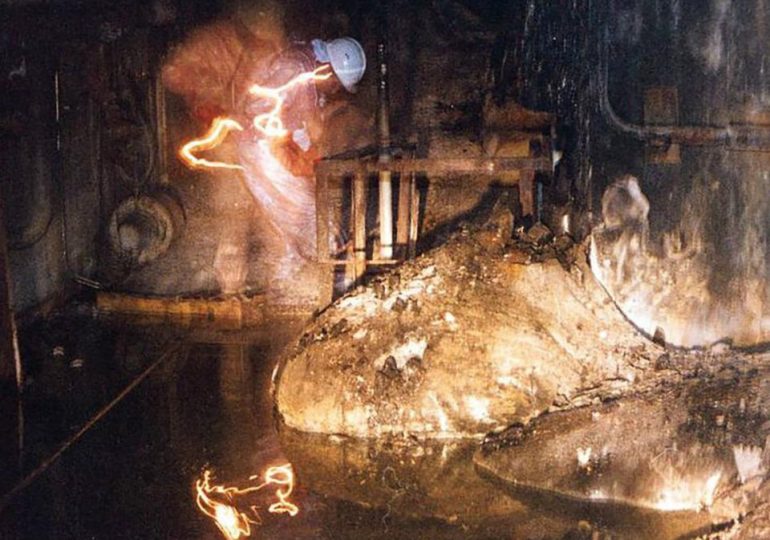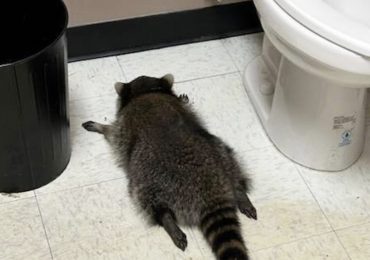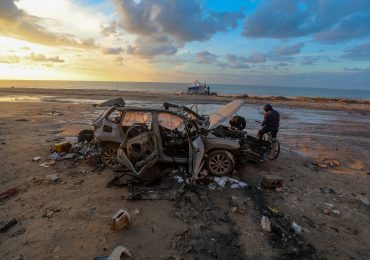AT the heart of the Chernobyl exclusion zone is a deadly radioactive object which can kill within seconds.
Elephant’s Foot is a highly dangerous mass of toxic material formed in the aftermath of the 1986 nuclear disaster.
US Department of EnergyThe Elephant’s Foot is a dangerous radioactive mass[/caption]
GettyIt was formed during the 1986 Chernobyl nuclear disaster and only two photos were ever taken[/caption]
Few residents have returned to Chernobyl following the disaster
Zaporizhzhia nuclear power plant was recently attacked by drones – here a rescuer attends the power plant in 2022 for a training exercise
The 10ft object was once so hazardous that anyone who spent just five minutes in close proximity would only have a 50 per cent chance of survival.
The area surrounding Elephant’s Foot serves as a stark reminder of the devastation a nuclear disaster would bring as Europe’s biggest power plant in Zaporizhzhia comes under threat.
The bizarre object – made of highly dangerous corium – was discovered laying in a dark chamber by Emergency workers in Ukraine.
Alarm bells started to ring when they noticed a steaming black lava oozing from its centre.
DEADLY MASS
According to readings, the still hot portion of molten concrete and sand was emitting enough radiation to give a lethal dose in just 300 seconds.
The intense radiation emitted by the Elephant’s Foot could have reduced life expectancy to a handful of days, reported the Star.
Just a few minutes of exposure would have caused an agonising death consisting of internal bleeding, uncontrollable vomiting and diarrhoea.
The surrounding areas are also unsafe and polluted by dangerous levels of radioactivity following the disaster which saw the nuclear power plant explode.
A 1,000-square-mile zone was cordoned off to prevent harmful exposure to people, and only about 1,000 residents have returned to the exclusion zone, now part of Ukraine, in the nearly four decades since they left.
Eerie pictures show the abandoned city frozen in time as its residents fled for their lives.
In particularly haunting images fairground rides including bumper cars and a Ferris wheel can be seen rotting as faded paint peels off.
Many believe Elephant’s Foot could be the most dangerous piece of waste in the world and even today setting foot in the chamber where it is slowly cooling amounts to a death sentence.
It’s so indestructible that no normal drill can penetrate it and when the Russian authorities shot at it with an AK-47 they only scratched its surface.
Only two pictures of the foot were ever released to the public but due to it’s deadly radiation, even the camera’s film was affected.
This resulted in the deterioration of the photos, and anomalies in the picture quality itself.
Even after more than 30 years, the foot is still melting through the concrete base of the power plant.
The nuclear wasteland is so toxic that wild wolves who roam the nuclear wasteland near Chernobyl have developed a ‘superpower’ following prolonged exposure to radiation.
Researchers are hoping their discovery of the exceptional genetic mutation could give humans a better chance at surviving cancer.
The mutant wolves appear to have developed cancer-resilient genomes – which have proved helpful in surviving the high levels of radiation that have plagued the human-free Chernobyl Exclusion Zone since the city’s power plant infamously exploded in 1986.
It comes as Russia was accused of a false flag attack after Europe’s biggest nuclear plant was blasted by drones.
Russia’s nuclear power corporation, Rosatom, had initially accused Ukraine’s military of launching a series of attacks on the Russian-held Zaporizhzhia nuclear power station in south-eastern Ukraine.
But a Ukrainian intelligence official quickly dismissed the claims and said Kyiv had nothing to do with any strikes on the station, suggesting they were the work of Russians themselves.
The UN.’s nuclear watchdog called for such incidents to cease immediately.
The firm warning came after Russia urged world leaders to denounce the incidents.
However, Russian officials and the UN’s International Atomic Energy Agency said radiation levels were normal and damage not severe.
What is the ‘Elephant Foot’
Elephant’s Foot is a dangerous radioactive structure made from molten material known as corium.
It was discovered after the Chernobyl nuclear disaster and was given its name due to its resemblance of an elephant’s foot.
It is also composed of concrete, sand, and other materials that were present in the reactor’s core and concrete containment area at the time of the explosion.
After the explosion, material from the reactor travelled into the bottom of the reactor vessel and dropped to the floor of the containment area.
Here it reacted with concrete, changing composition and it eventually cooled down and solidified – forming the Elephant’s Foot.
The mass is estimated to have reached a temperature of over 2,600 degrees celsius during the disaster.
The exact composition of the Elephant’s Foot at Chernobyl is unknown due to its highly radioactive nature.
Despite its danger it’s an important scientific curiosity.
Corium is only formed naturally during a nuclear accident and has only been formed five times.
GettyHere abandoned bumper cars have been left to rot in a deserted fairground in Chernobyl[/caption]
GettyThe surrounding areas around the Elephant’s Foot are still unsafe to this day[/caption]
GettyTourists are permitted to enter the abandoned city for short time periods, in this image a Ukrainian soldier visits the exclusion zone[/caption]
Leave a comment








